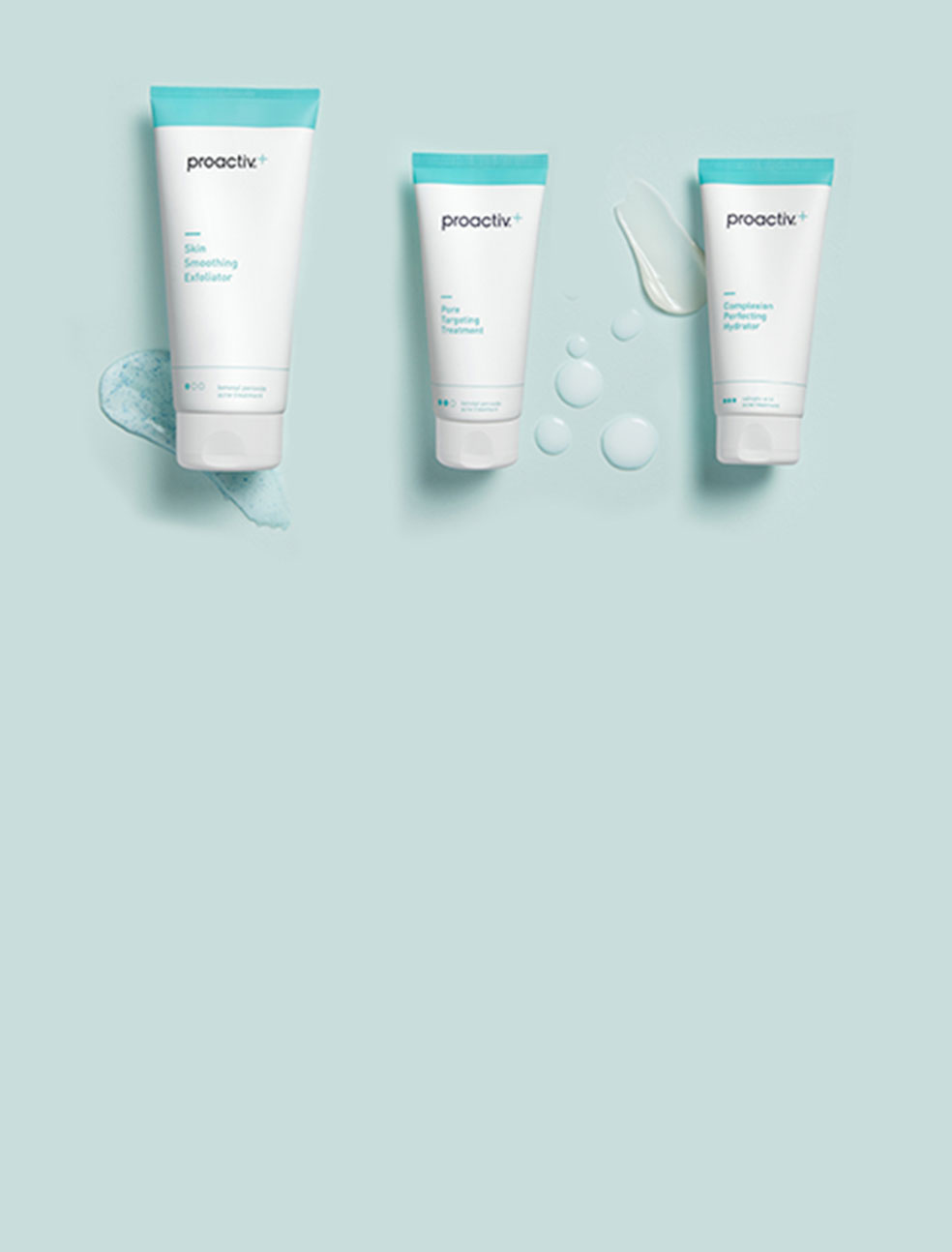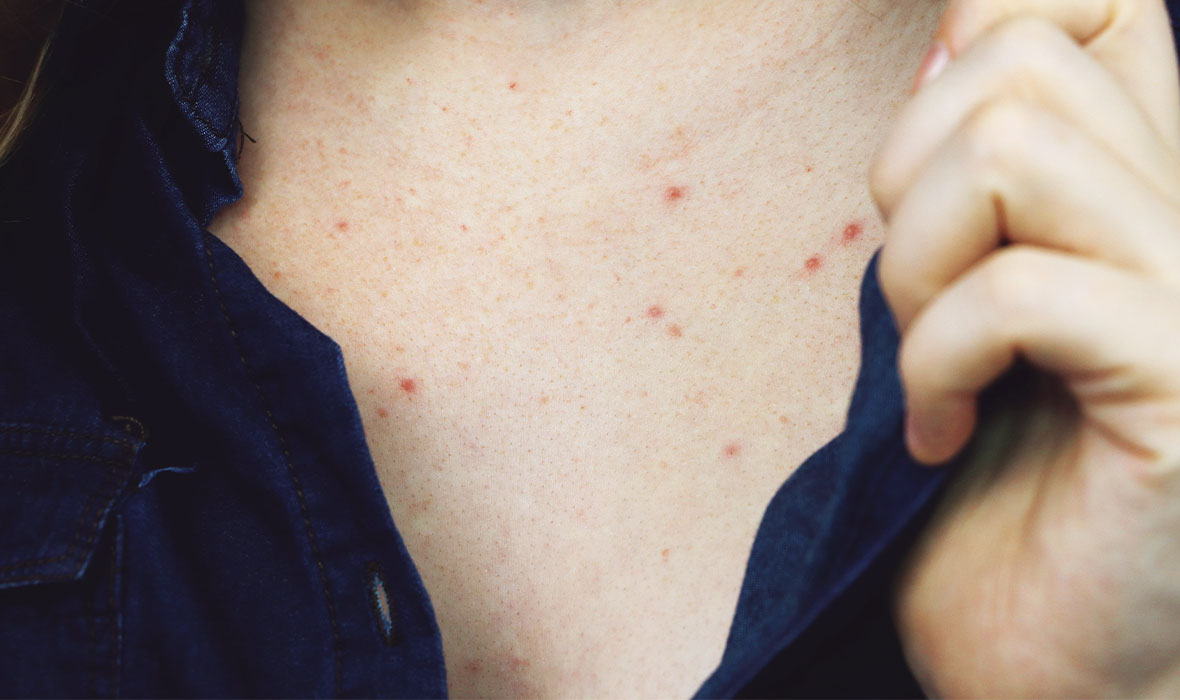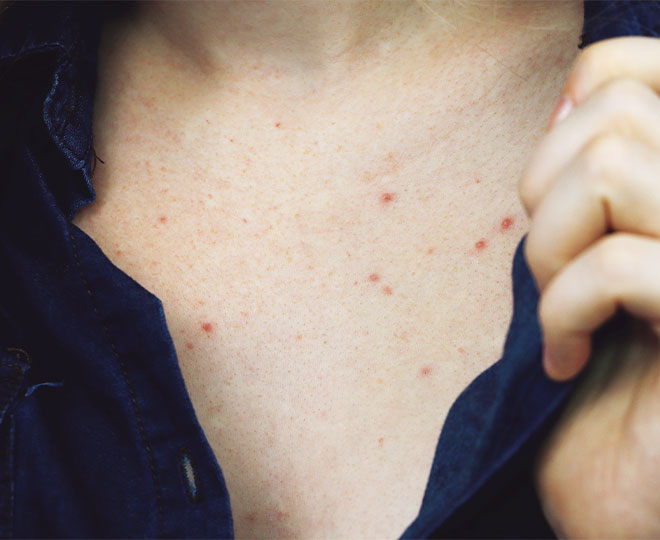Breakouts on your face are frustrating enough. And now you might be thinking, "Why is my chest breaking out, too?" Not to worry — you’re about to learn what causes chest acne, what you might be doing that could be making it worse, and how to get rid of it.
What causes chest acne?
If you’re experiencing acne on your chest, you’ve realized that acne, the most common skin condition in the US, seems to have no boundaries.
But why does it occur on the chest? It’s because acne can appear anywhere on your skin that you have oil glands. And you guessed it – there are oil glands on your chest. So when the pores on your chest get clogged with oil (aka sebum) and mix with dead skin cells and bacteria, acne can form.
Just like face acne, many things contribute to the formation of chest acne. These factors can include hormone fluctuations, high-sugar foods, oily skin, pore-clogging products like perfumes or moisturizers, friction from sweaty gear or workout clothes, or even the type of laundry detergent you’re using.
Let’s take a deeper look into how these factors can contribute to the formation of chest acne.
- Skincare, makeup, or perfume that block pores
Sometimes people apply makeup to their chest to cover acne or blend their face foundation down so their chest and neck match the shade of their face. However, oil-based makeup can be comedogenic and clog pores. Oil-based and other comedogenic body moisturizers can lead to clogged pores, too! Wondering how perfume could possibly clog pores? It’s actually because perfume may irritate your skin, leading to breakouts.
- Friction from clothing, equipment, or bags
When your clothes, sports equipment, backpack, or purse continuously rub against your skin, this friction can contribute to the development of chest acne. There’s a term for this, acne mechanica, which you’ll learn about later in this article. We’re not saying to stop working out, but that tight sports bra can do some damage if you don’t shower or clean the area soon after your workout. Your clothes and even sheets can soak up residue that can clog your pores.
- Sweat getting trapped on skin
Sweat alone doesn’t cause acne but it helps create an environment where acne-causing bacteria can thrive, especially with friction. So, try to shower or change clothes after a workout or other sweat-inducing activity.
Acne mechanica
When your skin is stretched, squeezed, or even rubbed with frequency and pressure, this friction can contribute to chest acne. The acne is therefore caused by mechanical means, hence the name. This type of acne can occur in addition to pre-existing acne or on its own.
Heard of those red and pink bumps called pustules and papules that you may just know as pimples? Acne mechanica, like acne vulgaris, can lead to these inflammatory types of breakouts.
Curious about the most common causes of acne mechanica so you can avoid them? They include:
- Sports gear like hockey or football equipment
- Accessories such as hats and necklaces
- Straps, like those on backpacks and purses (or even bras!)
- Fitted clothing such as shirts with collars
- Long periods of sitting
Ready to learn how to get rid of chest acne?
How to get rid of chest acne
Know this: Dirty skin is not the cause of chest breakouts. Ready for some other good news? With a few easy lifestyle adjustments and products, you can say goodbye to chest acne. But first, let’s dig into how you can attempt to avoid acne mechanica, a common culprit of chest acne.
- Avoid wearing overly tight or rough textured clothing and accessories to help reduce skin irritation. Make sure you choose sizes that fit comfortably.
- Change out of your sports gear or workout clothing as soon as possible and cleanse skin, either with a shower or wipe.
- Try not to frequently touch or rub your skin and wash skin after massages.
- Don’t use overly harsh soap and forceful scrubbing. This can actually make chest breakouts worse.
- Regularly wash anything that’s touching your chest frequently, like sports gear, bag straps, bras, and clothing.
Whatever you do, don’t pick at chest acne. It will just make your breakouts worse, and can also cause dark spots to form (post-inflammatory hyperpigmentation) which can take longer to improve than spots on the face, since the skin on your chest is thicker.
So what else can you do? There are a few lifestyle changes you can make to help prevent and lessen chest acne.
- Clean off sweat from your chest as soon as possible.
- Don’t put makeup, perfume or comedogenic lotions on your chest
- Wear loose fitting clothes in hot weather and when working out
- Steer clear of laundry detergents and fabric softeners with scents, dyes and waxy residue.
- Change out your sheets, pajamas and workout tops frequently.
- Choose sweat-wicking fabrics for workouts and sports.
If you’re still concerned, or these tricks don’t seem to be working, talk to your dermatologist about other options or treatments.
Must-have products for chest acne
Of course, we’ve got you covered with proven skincare systems to target your acne. For chest and body acne specifically, just add the Proactiv Acne Body Wash to your skincare routine every time you shower. It contains salicylic acid and glycolic acid to reduce oiliness, unclog pores, and remove dead skin cells so you can show off your chest with confidence.
You can find Proactiv Acne Body Wash in our Oil Control Duo.
The bottom line
There are a lot of things that can contribute to the formation of chest acne, especially friction and tight, sweaty clothing. But there are easy lifestyle changes you can make and products you can use to get it off your chest!

Try Proactiv+® — for dry or sensitive skin — featuring micronized benzoyl peroxide to dive directly into pores and help kill acne-causing bacteria while minimizing irritation.
choose this routine
Try Proactiv+® — for dry or sensitive skin — featuring micronized benzoyl peroxide to dive directly into pores and help kill acne-causing bacteria while minimizing irritation.

Try Proactiv+® — for dry or sensitive skin — featuring micronized benzoyl peroxide to dive directly into pores and help kill acne-causing bacteria while minimizing irritation.
choose this routine
Try Proactiv+® — for dry or sensitive skin — featuring micronized benzoyl peroxide to dive directly into pores and help kill acne-causing bacteria while minimizing irritation.






